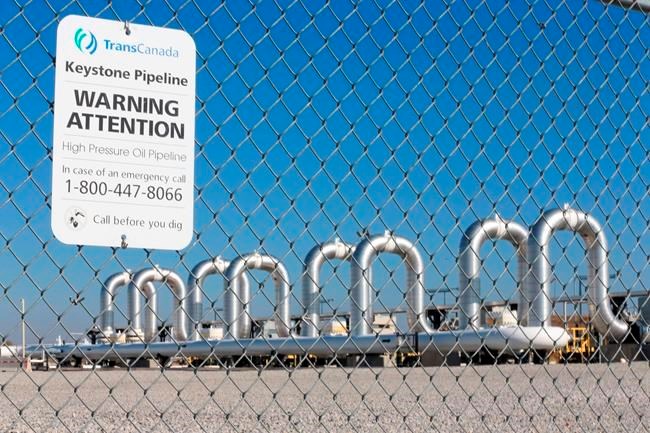CALGARY — Spills from TC Energy Corp.'s Keystone pipeline have been increasing in severity in recent years, to the point that the pipeline's safety record is now worse than the U.S. average, U.S. government data shows.
The 4,324-km pipeline — which is owned by Canada's TC Energy and helps to move Canadian and U.S. crude oil to markets around North America — suffered the worst leak in its history last week, when approximately 14,000 barrels of oil spilled into a creek in Washington County, Kan.
And even before the most recent event, the Keystone pipeline's safety record had been deteriorating, according to a report released last year from the U.S. Government Accountability Office (GOA), a congressional watchdog agency.
"Keystone’s accident history has been similar to other crude oil pipelines since 2010, but the severity of spills has worsened in recent years," the report stated.
It went on to say that similar to other crude oil pipelines in North America, most of Keystone’s 22 accidents from 2010 through 2020 released fewer than 50 barrels of oil and were contained on operator-controlled property such as a pump station.
But in 2017, a Keystone leak resulted in an approximately 6,600-barrel spill in North Dakota, while in 2019, the pipeline spilled about 4,500 barrels of oil in Â鶹ĘÓƵ Dakota.
Both events — which combined, were still smaller than the spill last week in Kansas — were big enough to the Pipeline and Hazardous Materials Safety Administration's (PHMSA) criteria for accidents “impacting people or the environment.”
"According to PHMSA’s measures for these more severe types of accidents, from 2010 to 2020 TC Energy performed better than nationwide averages, but worse in the past five years," the GOA report stated.
In an emailed statement Monday, TC Energy said it has taken "decisive action" over the last several years to strengthen its approach to safety and the integrity of its pipeline system.
"We take every incident very seriously. No incident is ever acceptable to us," TC's public information officer Reid Fiest said.
As of Monday, TC Energy had more than 250 people on the ground in Washington County working to clean up the most recent spill. While the company said the oil has been contained, it has not yet identified a cause of the spill.
The Keystone pipeline system remains shut down and a restart date has not been set. The company said it will be conducting a full investigation, in co-operation with regulators, into the cause of the spill.
Pipelines are widely considered by experts to be a safer mode of crude transport than either rail or truck. Still, the risk of a spill has long been a factor cited by environmentalists and others who have opposed North American pipeline construction projects in recent years.
For example, fears about potential pipeline leaks (as well as concerns about climate change) helped stoke opposition to TC Energy's proposed Keystone XL extension. That project would have cut across Montana, Â鶹ĘÓƵ Dakota and Nebraska but ultimately had its permit cancelled by U.S. President Joe Biden in 2021.
According to the GOA report, Keystone is the only crude oil pipeline in the U.S. to have been granted a special permit from the PHMSA to operate certain portions of the pipeline at a higher stress level than is allowed under existing regulations.
As a result, since 2017, TC Energy has been operating Keystone at a higher operating pressure than would normally be allowed under U.S. rules.Â
However, the GOA report concluded that the 2017 and 2019 spills were not the result of Keystone's special operating pressure permit.Â
Rather, the report identified "construction issues" leading to the material failure of pipe or welding material as a leading factor in past Keystone accidents. It said the 2017 Keystone leak was caused by issues in the construction, installation, or fabrication of the pipeline, while the 2019 North Dakota accident was caused by defects in the original pipe manufacturing.
This report by The Canadian Press was first published Dec. 12, 2022.
Companies in this story: (TSX:TRP)
Amanda Stephenson, The Canadian Press




